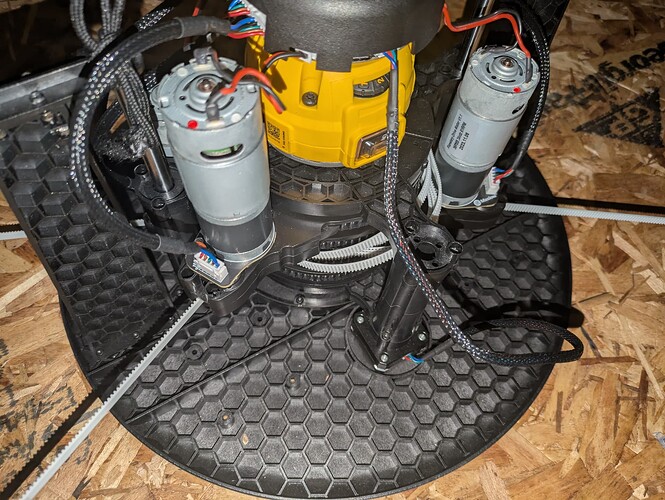wouldchuck wrote:
Made a new frame, smaller than the others. roughly 4300 by 2300. May try to
make it taller and less wide to get a better cutting area. Calibration took
about an hour? and with a calibration grid set at 400 by 400 5x5 it finally
worked but the calibration grid top row was about 10cm off of the top of the
plywood. I saved it by holding it up with my hand. Is there a way to set the
calibration grid to be centered on the original position? Here is the log in
case that helps make sense. I tried to visually center it and then reset the
xy home to that point. I had read in some of the forums that it might be
possible to manually describe the frame size as an estimate in order to speed
up calibration? I don¢t see that on the config dialogue. Where would that
be? Happy that i can finally drive my machine around using the buttons. Yay.
Perhaps I¢ll try some practice movements tomorrow.
the calibrate routine starts with all belts very close to equal lengths, it
currently need to calibrate around tht point. once it’s calibrated, you can
shift your workpiece as you want, but for the calibration, you need a surfact
the size of your calibration grid + ~150mm one each edge (+300mm total) to keep
the sled from falling off
Questions in order:
Machine fell off the top of the board, how to stop this?
see above (for now)
Is it possible to speed up calibration?
not at the moment [1], but you don’t have to do calibration unless you change
the frame
Is it possible to center the grid on the starting position?
no
Where does one enter the estimated frame dimension?
that is not needed/used any longer
What is a good test file to run without cutting?
just jog around with the arrows
what size is your work area? I have a 1’ and a 4x8’ test grid at
Index of /maslow you can use
How do people put a marker in the chuck for drawing or testing?
a stubby sharpie can just be jammed in there
Ian_a has a thread posted recently where he has a 3d printed part that holds a
mechanical pencil lead
other pen holders have been posted.
David Lang
[1] I am doing a lot of work in this area right now. Currently it’s too easy for
people to specify too small a grid or too large a grid (goes ‘out of the green’)
Bar and I have been working on separate projects to try and automate this.
I am also replying to this message while I wait for copilot on github to
implement my most recent change to a process that would virtually eliminate the
wait for it to do the calculation (where it shows the fitness scores) and I have
floated an approach that would handle non-standard layouts like yours (see
Discovery on moving calibration grid for
some of the discussion)
please follow along on this and when I have new versions to test, it would be
especially helpful for someone with an odd frame/placement to test it.
David Lang




